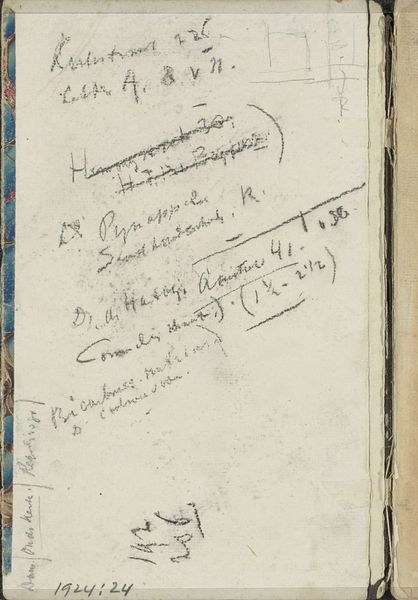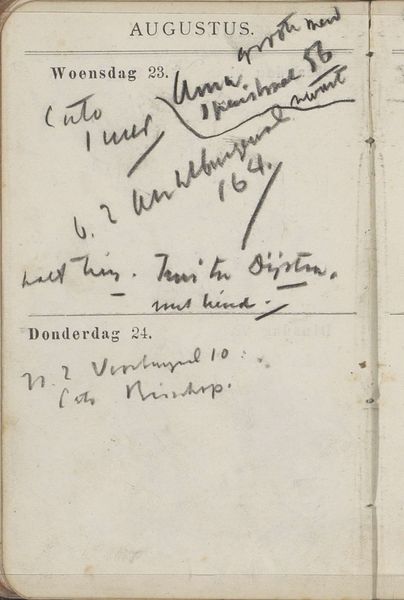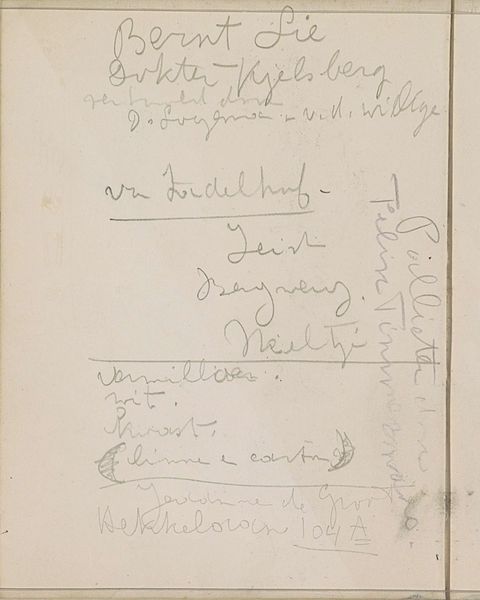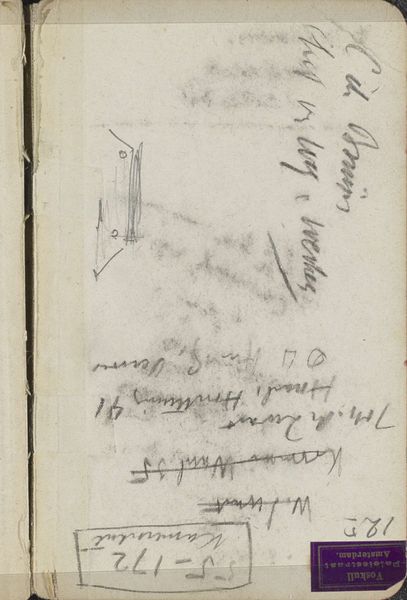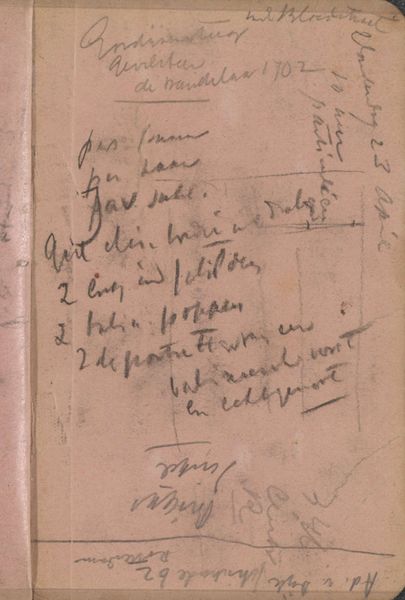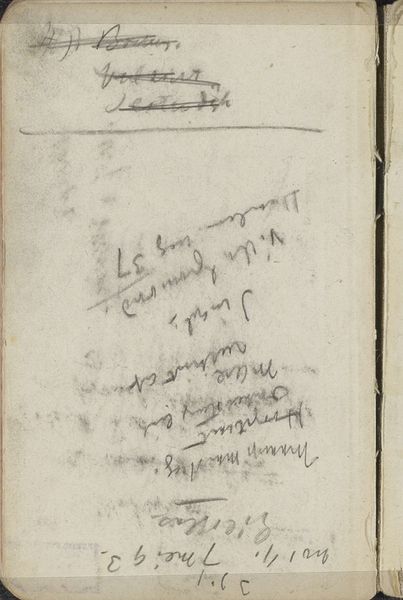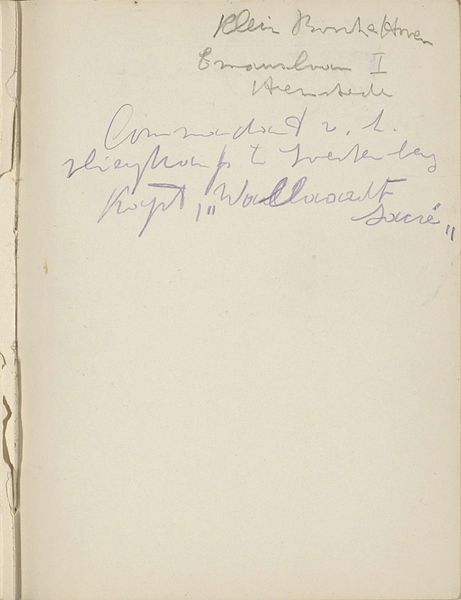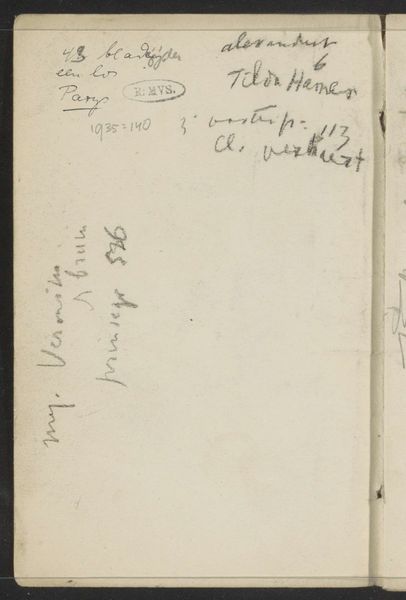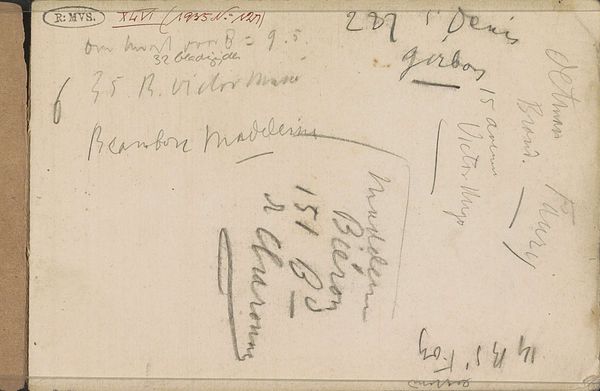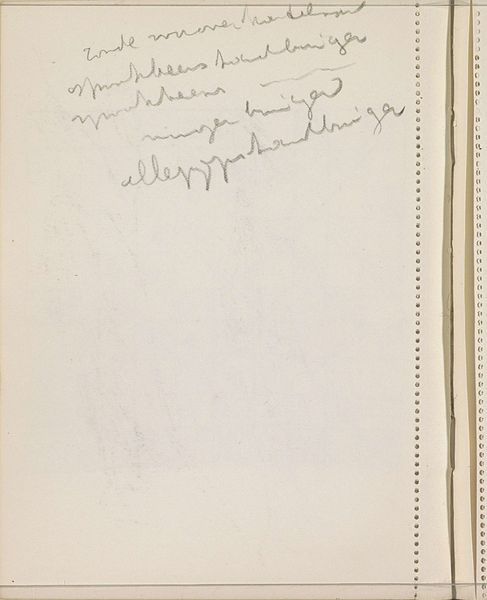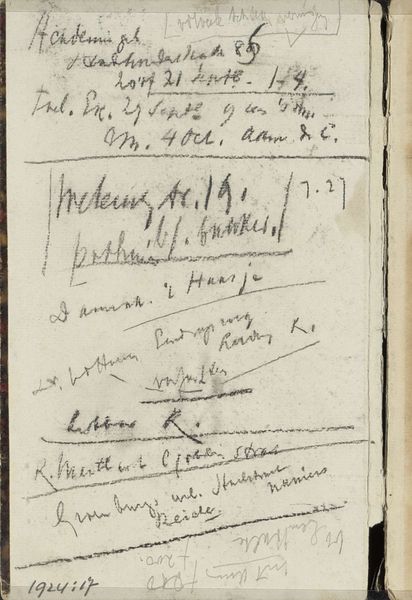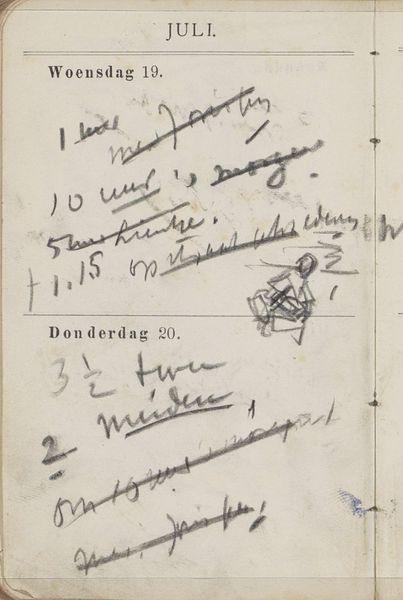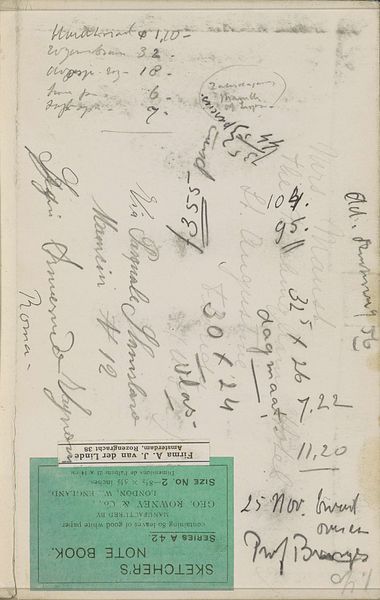
drawing, paper, ink
#
drawing
#
hand written
#
dutch-golden-age
#
figuration
#
paper
#
ink
#
hand-written
#
intimism
Copyright: Rijks Museum: Open Domain
Editor: This is “Annotations,” a drawing made with ink on paper by George Hendrik Breitner in 1893. It looks like handwriting...almost like someone's personal notes. What do you see in this piece? Curator: I see layers of memory embedded in the ink. Breitner, known for his paintings of Amsterdam street life, offers us here a glimpse into his artistic process, or perhaps just a mundane record. The handwriting itself becomes a symbol, a trace of his presence. Editor: So, it's not just what is written, but the act of writing itself that carries meaning? Curator: Precisely! Consider the cultural weight of handwriting. Before typewriters and computers, handwriting was deeply personal, reflecting one’s character, education, and social standing. These handwritten annotations connect us to a specific historical context and a mode of communication that's becoming increasingly rare. Editor: Are there any clues about what he was noting down? It seems rather cryptic to me. Curator: The specific content is less important than the act of recording, wouldn’t you say? These could be reminders, observations, or calculations—mundane in their original context. But now, framed as art, they evoke a sense of intimacy, a privileged peek into the artist's private thoughts. We are deciphering a symbolic language of a life long gone, even without knowing the meaning behind them. Editor: It's fascinating how something so simple can reveal so much. Thanks, I see the piece quite differently now. Curator: And I am struck once again by the power of a seemingly insignificant sketch to reveal a tangible sense of the artist's presence, resonating even now across time.
Comments
No comments
Be the first to comment and join the conversation on the ultimate creative platform.
